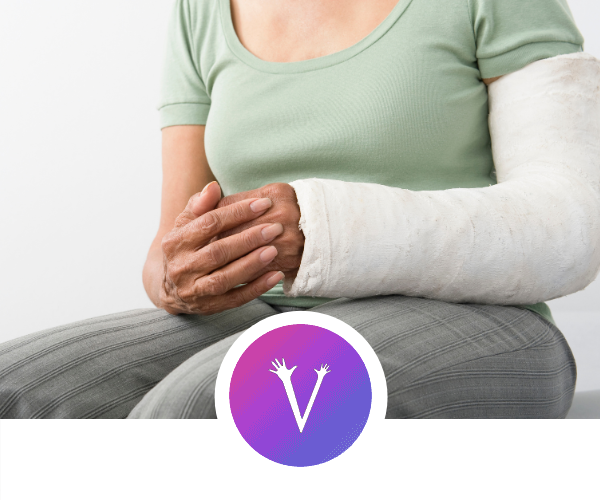Boost your bones

It is estimated that 50% of women and 20% of men aged over 50 will suffer a fracture due to osteoporosis. Unfortunately, we often don’t know there’s a problem with our bones until we have a fracture when a DEXA scan provides a diagnosis.
What is osteoporosis?
Osteoporosis is a bone-weakening disorder which can result in a greater susceptibility to bone fractures.
‘Osteo’ means bone and ‘porosis’ mean porous, literally meaning porous bone. This is because the honeycomb structures of spongy bone become more porous which leads to a ‘weaker’ bones.
There are more than 500,000 fragility fractures every year in the UK which is one every minute! So it’s really important that we do what we can to reduce our risk of falls and fractures.
Here are some of the things you can you do to boost your bone mineral density through exercise and nutrition.
Nutrition
Unless you’ve been advised to take a calcium supplement, it’s better to get calcium from the food you eat as too much calcium can lead to kidney stones or heart problems.
We need to consume between 800-1,200mg calcium per day which you can get from a variety of food.
Tinned sardines are a great source of calcium with about 380mg per serving.
For vegetarians and those who don’t enjoy sardines, there are plenty of alternatives such as chia seeds, sesame seeds, tahini, green leafy vegetables, almonds, dried fruit (figs), pulses and seaweed.
To make sure the calcium you eat is absorbed into the bones you also need vitamin D, magnesium and vitamin K.
During the summer months, we can get vitamin D from the sunshine, but from October through to March the NHS recommends that we take a supplement of 10 micrograms (or 400 units) of vitamin D.
Magnesium is found in nuts, seeds, pulses, green leafy veg
Vitamin K1 is found in leafy green vegetables and Vitamin K2 is found in full fat Emmenthal and Jarlsberg cheese and free range eggs.
If you like cheese then try Jarlsberg as it’s rich in vitamin K2 and also helps to boost osteocalcin, the hormone responsible for strong bones and teeth.
Exercise
If you have osteoporosis then it’s best to consult your doctor or a physiotherapist before starting any exercise programme.
These types of activities are often recommended for people with osteoporosis:
Strength or resistance training includes the use of resistance bands, weights or your own body weight to strengthen the major muscle groups, especially spinal muscles which are so important for posture.
Proper form and technique are crucial to prevent injury and get the most from your workouts it’s beneficial to get professional advice first.
Other types of exercise that help boost your bones (and your heart health) include walking, dancing, low-impact aerobics, stair climbing and gardening.
Although swimming and cycling have many benefits, they don’t provide the weight-bearing load your bones need to slow mineral loss, so try to add some weight-bearing activity into your exercise routine too.
Improving your balance is vital especially if you have osteoporosis. Stability and balance exercises help your muscles work together in a way that keeps you more stable and less likely to fall. Simple exercises such as standing on one leg or movement-based exercises such as tai chi can improve your stability and balance.
What to avoid
If you have osteoporosis, you may be advised to avoid certain types of exercises such as high-impact activities such as jumping or running or sports which put you at risk of falls.
Exercises such as touching your toes or doing sit-ups can increase your risk of compression fractures in your spine if you have osteoporosis. Other activities that may require you to bend or twist forcefully at the waist are golf, tennis, bowling and some yoga poses.
If you are concerned or are at higher risk of osteoporosis, you can ask your GP for a DEXA scan which can measure your bone mineral density.
Risk factors include
Finally, try to avoid drinking a cup of tea with your meal as the tannins in tea may inhibit the absorption of calcium. And fizzy drinks may lead to calcium depletion due to the phosphoric acid in some cola-type drinks.